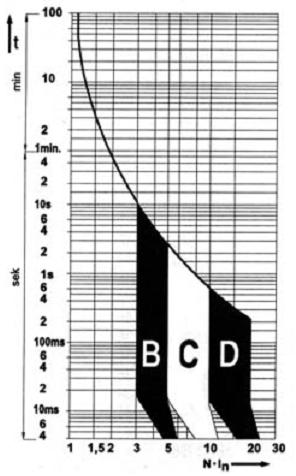Dear fellow electricians, I have a question related to fuses B16 and C16. I would like to know which will work first in overload and short circuit. I know that the fuses B16 are faster than C16. C16 are used in the protection of motors. But I heard that there are places on the characteristics with B16 and C16, they will work simultaneously when shorted. If I am wrong, please correct me. Thank you for your help. And I am talking about automatic fuses, they are commonly called esy.



